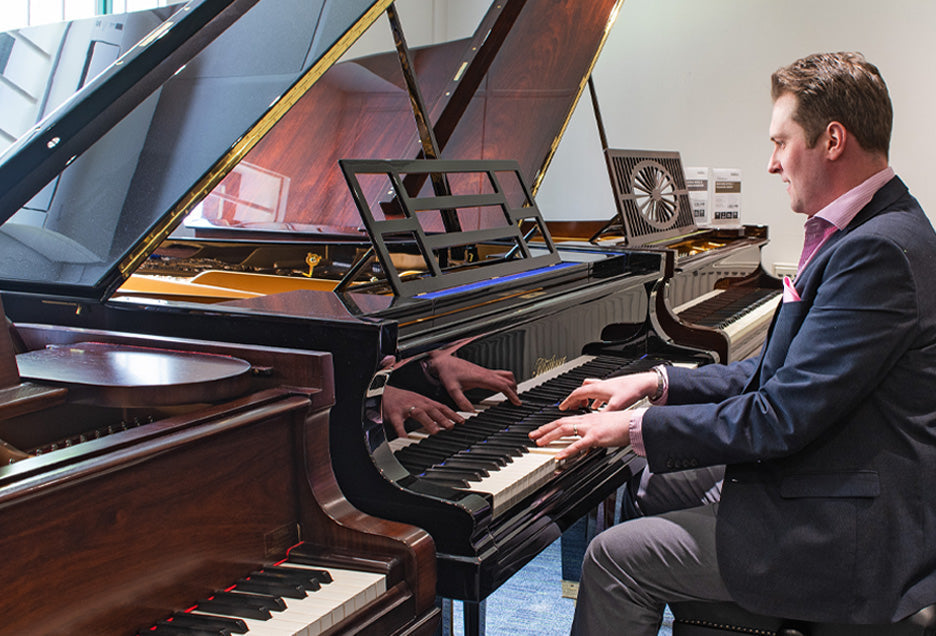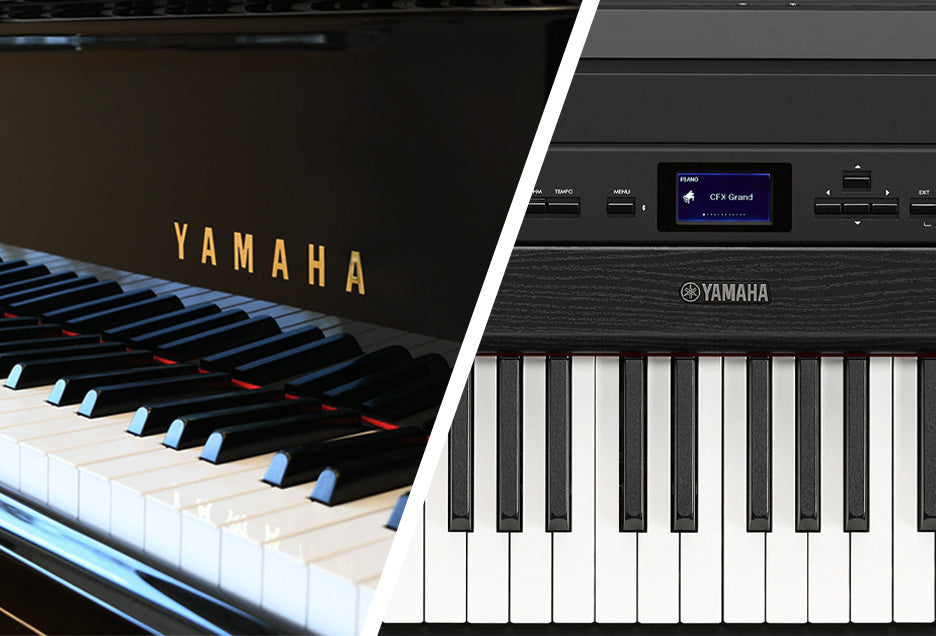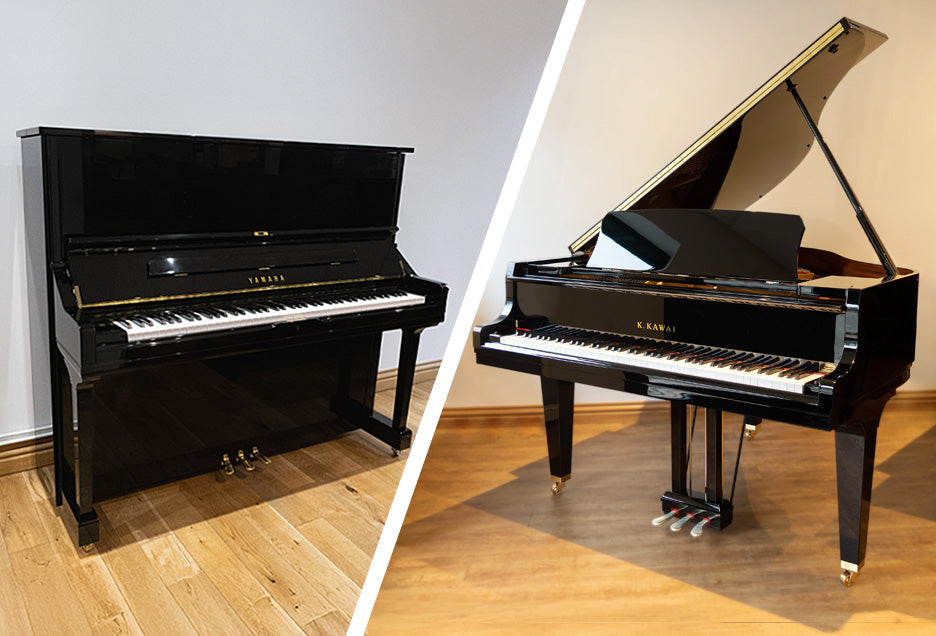This article was originally published on The Chamberlain Music Teacher Hub.
The invention of the piano is credited to Bartolomeo Cristofori, an expert harpsichord maker born in Padua, Italy, in 1655. He had extensive knowledge of stringed keyboard instruments and was employed from 1688 by the Grand Prince of Tuscany as Keeper of Instruments.
What came before the piano?
Prior to his invention of the piano, keyboard instruments like the harpsichord and clavichord existed but lacked the ability to vary volume with the intensity of the key strike. The main challenge that Cristofori had to solve was how to design a hammer mechanism that could strike the string, then quickly fall away to allow the string to vibrate freely, and then return to its rest position to allow for rapid repeated notes. His new instrument, ‘Un Cimbalo di Cipresso di Piano e Forte’, eventually abbreviated to ‘fortepiano’ and then to ‘piano’, revolutionised keyboard instruments and ushered in the beginning of a new era in music-making. While much of his early work has been lost to time, historical records show that at least one of these ‘pianos’ existed by 1700.
Cristofori's early pianos had very thin strings and were much quieter than modern instruments, remaining relatively unknown until a 1711 article by Italian writer Scipione Maffei was translated into German and widely distributed. This article included diagrams and inspired a new generation of piano builders to refine and improve on Cristofori’s designs. An early development by German organ builder Gottfried Silbermann enabled pianists to sustain notes which they have played even after releasing the keys, an invention which gradually evolved into what we know today as the sustain or damper pedal.
Impact on musical trends
Up until this point, the vast majority of keyboard music had been written for organ and harpsichord, as exemplified by the career of J.S. Bach. However, during the late 18th century the art of piano making flourished in the Viennese school, with the piano gathering momentum as a feature of new music by composers such as Wolfgang Amadeus Mozart and Ludwig van Beethoven. Fortepianos of this era are distinctive in tone and much softer than today’s pianos, owing to their wooden frames, leather wrapped hammers and only two strings per note. Replicas of these instruments are manufactured today specifically for authentic or 'historically informed' performances of repertoire from this period.
Further advances in the 19th century
The industrial revolution led to huge advances in the structure of the Mozart-era piano, with higher quality stringing wire and the introduction of cast iron frames resulting in much more powerful and resonant instruments. It was towards the end of the 18th century that John Broadwood & Sons produced the first ‘grand pianos’, combining the hammer action of the piano with the stringing and casework of a harpsichord. During this time the range of the piano also increased from five octaves in Mozart’s time to seven octaves by 1820. Broadwood’s early pianos were positively received and became renowned for their powerful tone and robust build quality, with Beethoven utilising the extra notes on the Broadwood in his later works.
Parisian piano innovation
By the 1820s, Paris had become the new hub of piano innovation, with notable advancements in the design and mechanics of pianos, many of which remain a key part of piano mechanisms today.
Sébastien Érard’s invention of the double escapement action in 1821 featured a repetition lever, allowing for faster note repetition even when the key hadn't fully returned to its resting position. This innovation was especially beneficial for the rapid, virtuosic playing techniques of composers such as Franz Liszt.
Felt hammer coverings were introduced by Jean-Henri Pape in 1826, and proved to be a more consistent material for the hammer, allowing for greater dynamic range. While the sustain pedal was already an accepted component of the piano, in 1844 Jean-Louis Boisselot invented the sostenuto pedal, enabling pianists to sustain only selected notes while playing others. This pedal system was later adopted by Steinway in 1874, and similarly to the double escapement action is found on all new grand pianos, and several professional series uprights today.
The cast iron frame
A key innovation at this time, helping to produce the powerful sound of the modern piano was the introduction of the cast iron frame. Often referred to as the "plate," this strong, massive frame sits on top of the soundboard and plays a critical role in withstanding the immense tension exerted by the strings. Modern grand pianos can have a total string tension of over 20 tons (about 180 kilonewtons), and the cast iron frame is essential in supporting this force, ensuring the stability and durability of the piano. The increased strength facilitated by the iron frame also led to the use of thicker, tenser, and more numerous strings, all contributing to the powerful sound of today’s piano.
Refinement and continued relevance
Development in piano technology since then has mainly been refinement. One major reason for this is the extensive repertoire that has been consistently written for piano in the last two centuries or so; it makes sense to refine the instrument for more precise performances, but not to revolutionise it entirely. This focus on improvement has led to innovations such as the introduction of cross-stringing in the late 19th and early 20th centuries, where overlapping strings create a denser and more resonant sound. Additionally, modern advancements include the use of carbon fibre in piano components to enhance durability and sound quality. These developments have allowed the piano to maintain its traditional character while adapting to contemporary performance demands.




